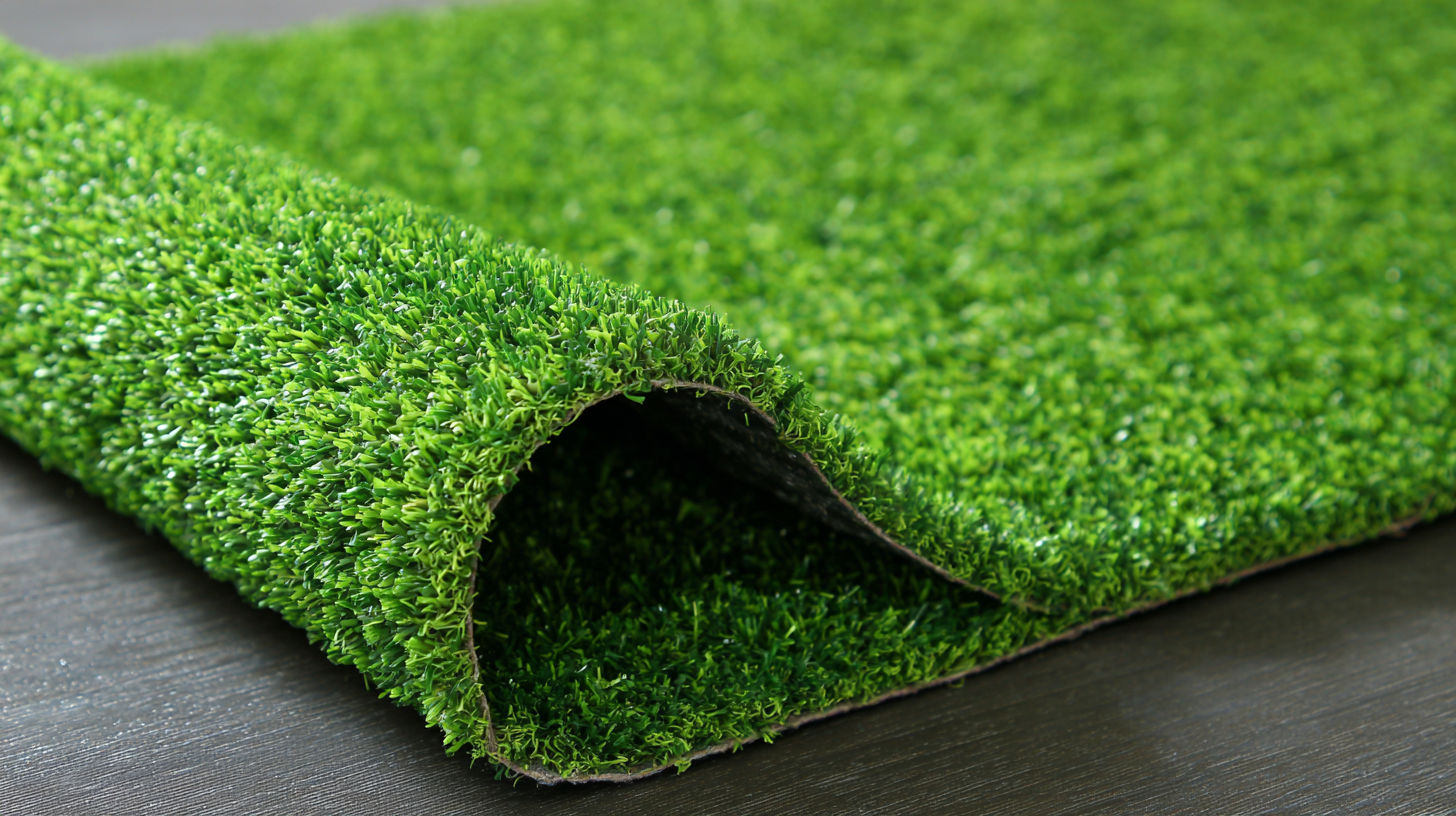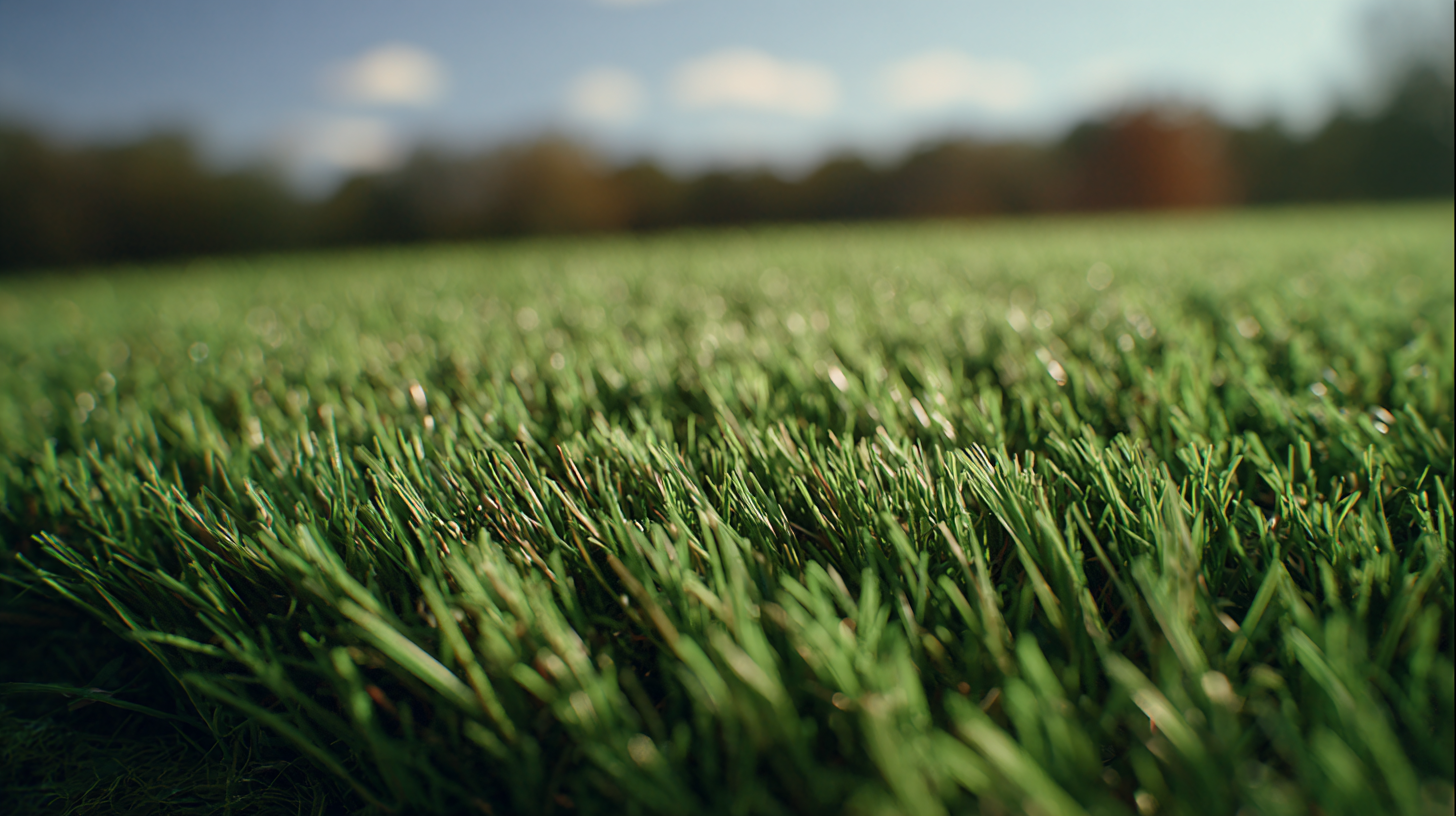Exploring the Versatility of the Best Plastic Green Grass Mat for Diverse Applications
In recent years, the Plastic Green Grass Mat has gained significant attention for its remarkable versatility and wide range of applications. As an innovative alternative to natural grass, this synthetic solution has made its way into various sectors, from landscaping and event planning to sports and commercial spaces. The durability, low maintenance, and aesthetic appeal of these mats make them an ideal choice for those seeking sustainable yet functional outdoor and indoor environments.

This blog aims to explore the top strategies for effectively utilizing Plastic Green Grass Mats across diverse settings, highlighting their benefits and creative uses. Whether you're a homeowner looking to enhance your garden or a business seeking to revamp your premises, understanding the multifaceted advantages of Plastic Green Grass Mats can unlock new possibilities in design and functionality. Join us as we delve into the many ways these mats can transform spaces and offer practical solutions for everyday needs.
The Benefits of Using High-Quality Plastic Green Grass Mats in Various Settings
High-quality plastic green grass mats have become increasingly popular across various settings due to their versatility and numerous benefits. One of the primary advantages of these mats is their ability to withstand different weather conditions without deteriorating, making them a reliable choice for outdoor events, temporary installations, and recreational spaces. Unlike natural grass, which requires constant maintenance, plastic grass mats offer a low-maintenance alternative that retains its lush appearance throughout the year.
In addition to their durability, plastic grass mats are also environmentally friendly. Many mats are made from recycled materials, reducing waste and promoting sustainability. Their design enables excellent drainage, preventing water accumulation and providing a safe, slip-resistant surface for activities. Whether used in parks, playgrounds, or even indoor venues, these mats contribute to a clean, hygienic environment that can significantly enhance the user experience. The adaptability of plastic green grass mats in various applications makes them an ideal solution for both aesthetic appeal and practical functionality.
Innovative Applications: Transforming Spaces with Versatile Grass Mats
The landscape and design industry has seen a substantial shift towards the use of versatile plastic green grass mats,
which offer innovative solutions for transforming various spaces. According to a recent report by Grand View Research, the global artificial grass market is projected to reach
USD 4.5 billion by 2024. This growth is largely driven by the increasing demand for sustainable landscaping options,
particularly in urban environments where natural grass is harder to maintain. The adaptability of these mats allows them to be utilized in numerous settings—from playgrounds and
sports fields to commercial landscapes and indoor gardening.
In addition to providing aesthetic value, plastic grass mats contribute to environmental sustainability. Studies indicate that artificial turf can reduce water consumption
by up to 70% compared to natural lawns, making them an appealing choice in drought-prone regions.
Furthermore, their durable construction ensures they can withstand heavy foot traffic, making them ideal for public spaces like parks or event venues.
These mats not only enhance the visual appeal of a location but also support eco-friendly practices, enabling designers and property owners to create green spaces that are
both functional and attractive.
Durability and Maintenance: Why Plastic Grass Mats are a Smart Choice
When considering landscaping solutions, the durability and maintenance of materials are crucial factors. Plastic grass mats have emerged as a leading choice for both residential and commercial applications, thanks to their robust nature. These mats are designed to withstand varying weather conditions, making them ideal for areas prone to heavy foot traffic, such as parks, playgrounds, and event spaces. Unlike natural grass, which can become patchy and require constant care, plastic grass mats maintain their vibrant appearance year-round, reducing the need for regular upkeep.

Moreover, the maintenance of plastic grass mats is minimal compared to traditional grassy areas. A simple sweep or rinse is often enough to keep them clean, and their resilient structure means they resist fading and wear over time. Additionally, they do not require mowing, watering, or fertilizing, which not only saves time and effort but also contributes to environmental sustainability. This efficiency makes plastic grass mats an appealing option for busy families, event planners, and businesses seeking a low-maintenance yet attractive solution for their green spaces.
Sustainability in Manufacturing: The Eco-Friendly Aspects of Grass Mats
In recent years, the demand for eco-friendly products has surged, and plastic green grass mats have emerged as a sustainable solution for various applications. These mats are crafted from recyclable materials, which significantly reduces their environmental impact compared to traditional synthetic turf. By utilizing recycled plastics, manufacturers can conserve resources and decrease waste, making these mats a responsible choice for consumers looking to enhance their green spaces without harming the planet.
Moreover, the production of these mats adheres to sustainable practices, emphasizing energy efficiency and minimal emissions during the manufacturing process. By investing in renewable energy sources and optimizing production techniques, manufacturers can create high-quality grass mats that not only serve functional purposes but also align with eco-conscious values. This commitment to sustainability is increasingly appealing to homeowners, businesses, and event planners who prioritize environmentally friendly options while still desiring aesthetic appeal and durability.
Real-World Examples: Successful Uses of Plastic Green Grass Mats Across Industries
Plastic green grass mats have gained popularity across various industries due to their adaptability and numerous benefits. One notable application is in event management, where these mats serve as attractive yet functional surfaces for outdoor weddings, festivals, and exhibitions. They create a lush, green ambiance, enhancing aesthetics while providing a clean area for guests. Additionally, they're easy to install and remove, making them ideal for temporary setups that require minimal maintenance.
In the sports industry, plastic grass mats have become essential for training and practice facilities. They offer a consistent playing surface that mimics natural grass, ensuring athletes can train effectively regardless of weather conditions. Soccer, golf, and cricket training camps utilize these mats to improve performance while minimizing injury risks associated with uneven outdoor terrains. Furthermore, schools and community centers use them for playgrounds and recreational areas, providing a safe and environmentally friendly surface for children to enjoy outdoor activities.


